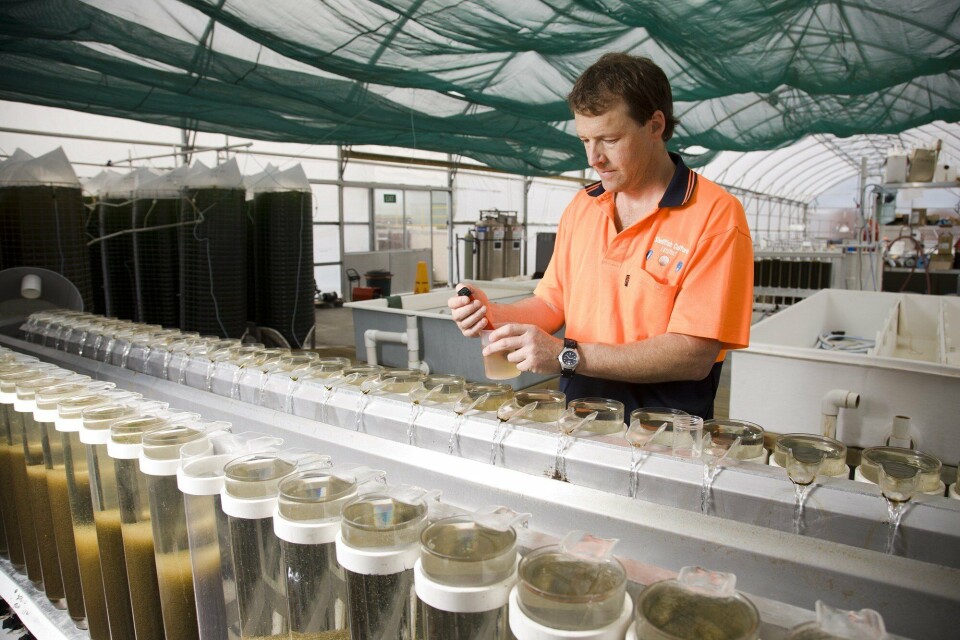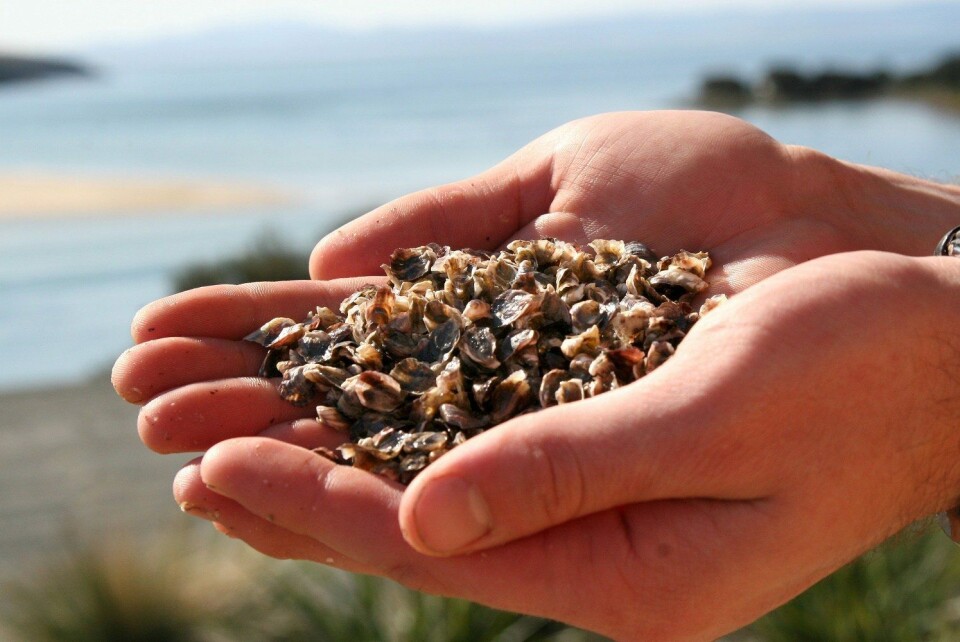
Genetic solution to lethal oyster disease
An Australian genetic improvement program is helping to combat the devastating effects of Pacific Oyster Mortality Syndrome (POMS).
The disease, harmless to humans but so lethal to oysters that it can kill more than 90 per cent of a crop of millions of animals in days, practically wiped out the Pacific oyster industry in France in 2007.
In March 2010, New Zealand’s stocks of Pacific oysters succumbed to the virus that causes POMS, OsHV-1, and eight months later, POMS hit Botany Bay’s Georges River estuary, killing almost all of the area’s cultivated Pacific oysters.
By 2013, POMS had spread to a second New South Wales estuary - the Hawkesbury River - where the disease killed more than ten million oysters in three days. And in January last year, it turned up in Tasmanian waters, considered by some to be the least likely destination for POMS in Australia, due to the disease’s preference for water temperatures above 21-22°C.
According to Scott Parkinson, selective breeding manager at Shellfish Culture - Australia’s main Pacific oyster hatchery - the Tasmanian industry lost 50 employees, and 60 per cent of the state’s growing areas were affected after the disease hit.
Top priority
Prior to 2010, Australian Seafood Industries (ASI) - the sole supplier of selectively bred Pacific oyster broodstock to the Australian industry - had been working closely with the Commonwealth Scientific and Industrial Research Organisation (CSIRO), the federal government agency for scientific research in Australia, and the NSW Department of Primary Industries (DPI) on a genetic improvement program for Pacific oysters.
While that research was focused on breeding oyster ‘thoroughbreds’ - larger, juicier and more robust than their wild cousins - its direction quickly changed once POMS struck. Now, the race was on to breed oysters genetically predisposed to resist the disease.
“Essentially, the message from industry was, forget your other priorities, have a look at this,” says CSIRO senior geneticist, Dr Peter Kube. “Tell us whether genetics is going to be a solution, a management tool for this disease.”
Diseased estuary
So, after the first POMS outbreak in the Georges River, individuals from some of ASI’s 80 genetic ‘lines’ or families—already in trials in a ‘clean’ estuary in nearby Port Stephens—were relocated to the ‘diseased’ estuary to test genetic differences in the presence of the virus.
With NSW DPI running the field trials, CSIRO analysed survival data and found there was indeed a genetic basis. However, the genetic trait that was identified was new to science. “The challenge was then to understand the way in which this trait is inherited, and then figure out how best to breed for it,” says Dr Kube.
“POMS resistance is what we call a polygenic trait, which means there are perhaps thousands, or tens of thousands, of genes involved. The breeding program is about accumulating or increasing the frequency of those genes with each new generation.”

The next step was to identify an overall level of POMS resistance within the commercial oyster population that the industry could work with. That level was 60-70 per cent, a target that would require at least three breeding cycles to achieve in a research population.
But that was time the Tasmanian industry didn’t have and so some genetic lines from the trial breeding population were sent ahead to Tasmanian growers over the 2016-17 summer, the season of highest risk for POMS. It seems to have been a success. These lines have shown even higher levels of resistance, up to 80-90 per cent. However, as Dr Kube points out, it will require time - up to two years - for hatcheries to be able to produce commercial quantities of seed from resistant genetic lines for growers.
Trial and error
Shellfish Culture’s Scott Parkinson says a strategy of ‘farming around’ the disease will be a key factor in getting the most out of the new genetic lines. Shellfish Culture takes ASI broodstock and produces large quantities of seed or spat—baby oysters three to nine months old—that it sends to oyster farms for growing out.
“Managing POMS is not just about genetics, although that will underpin the recovery of the Australian oyster industry, but about management, site selection, when to stock,” says Parkinson. “Different growers are experimenting with different strategies.”
Oyster age is a risk factor for POMS, with younger oysters at a higher risk of death than mature individuals.
“Some growers are putting spat in during the POMS season, when the animals are very young. The idea is that only resistant animals will survive and grow out. Others are taking the spat in the autumn so they can grow to a bigger size before the next POMS season—as they will be a larger size, they are more likely to have higher survival rates. It’s an economic exercise that the growers will have to do by trial and error.”
For Shellfish Culture, POMS has brought both challenge and opportunity. Overnight, the company lost not just a significant percentage of its stock of around 100 million spat, but was no longer able to supply South Australia or most of NSW - which represented 50 per cent of its market - due to interstate biosecurity protocols.

Its response was to set up a new facility in South Australia, Eyre Shellfish. At the same time, the company invested in making its main hatchery operation near Hobart biosecure, which after two independent biosecurity audits has been declared disease-free and is now back to supplying oyster spat to the entire Tasmanian industry.
Genetic resistance
ASI’s general manager, Matt Cunningham, also sees management strategies adopted by oyster growers as an important complement to genetics. Yet the fact remains that farming strategies are useless if stock are not viable.
“To have a viable oyster industry, we have to have POMS-resistant Pacifics – there’s no way around it,” says Cunningham. “In terms of having an effective response to an industry crisis, this is a good story. We had the family lines in place in NSW and we were able to hit the ground running. We were four to five years ahead of France and New Zealand, where they essentially had to start their breeding program from scratch.”
For Dr Kube, the genetic improvement research continues. “CSIRO provides the specialist genetic knowhow. We’ve been analysing the trial data and interpreting it so that ASI can use it to choose which animals will be used as breeding stock in each new cycle,” he says.
“We will keep breeding stock for resistance. We still have a percentage of animals that die from the disease, so we have to get more and more resistance into that stock.”























































